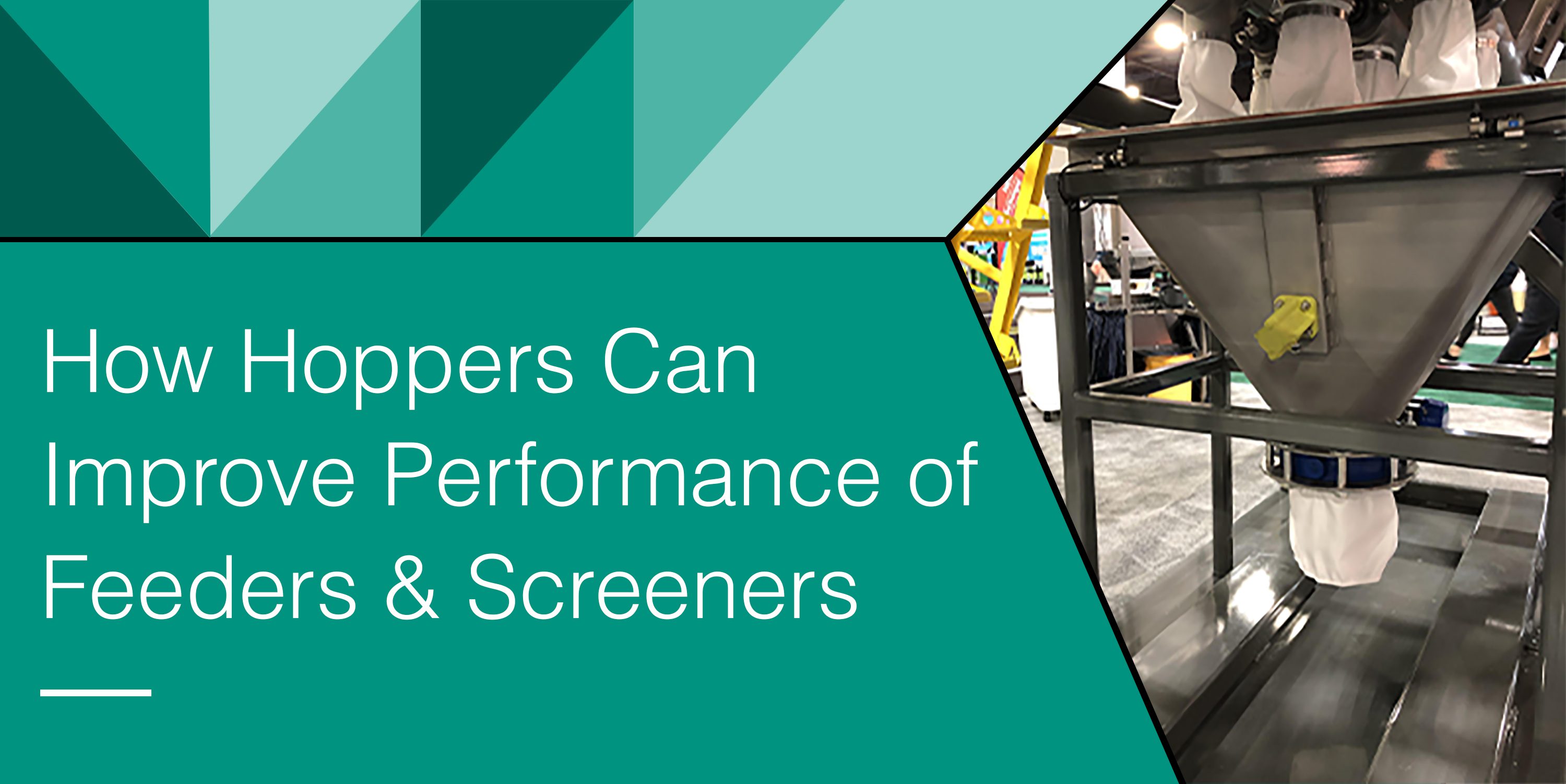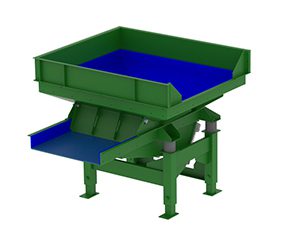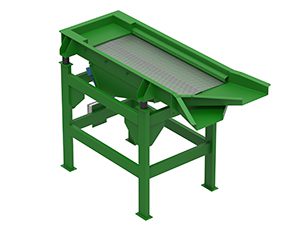Hoppers can aid in the performance of material handling equipment, plus provide health and safety benefits for your workforce. To begin, we will review the advantages hoppers can provide to improve the performance of feeders and screeners for bulk loading applications.
Okay, so what is a hopper?
Hoppers can be stationary with steeply sloping walls to allow free-flowing material to discharge onto the feed tray. Due to their steep walls, these hoppers can have a high dump height, depending on the volume. For lower dump heights and/or poor flowing materials, a vibrating hopper is a great solution. The hopper is attached to the vibrating body and the vibrators are then upsized to compensate for the increase in vibrating weight. The material is fed from the hopper onto the equipment.
How can a hopper improve the performance of your feeder?
Let us start with vibrating feeders. There are several applications where the material is fed manually or by a bulk loading dumper. This can lead to overloading the tray at the feed end and spillage. Utilizing a hopper provides the operator with a much larger target, so there is a much lower chance for spillage. We also provide a gate at the discharge end of the hopper to control material flow onto the feed end of the tray.
Additionally, the hopper takes the brunt of the dump, which saves wear & tear on the feeder tray. Further, we can provide lining for the hopper and feeder tray with abrasion-resistant material. This lining can provide the added benefit of noise reduction.
Before we continue, if you would like to learn more about how vibratory feeders work, our vibration experts provided this great tutorial!
Comparatively, how can a hopper improve the performance of your screener?
While the above also applies to vibratory screeners, they can result in even more benefits than feeders when provided with a hopper for bulk loading. Material flow to a screener is critical to its efficiency. Any excessive material flow depth or irregular feeding can negatively impact the performance of a screener. A hopper can provide an even, steady material flow to the screen deck.
How can a hopper provide health benefits to your employees?
The health benefits of a hopper include reduced wear and tear to operators that manually dump material onto feeders or screeners. Consequently, this type of labor can cause serious health issues to backs, shoulders, arms, and even lungs & eyes if the material is dusty.
Additionally, using a hopper puts the operator further from the vibratory equipment, reducing their noise exposure. Safety is improved as the operator is no longer exposed to the risks associated with manually feeding vibratory equipment.
You now have several good reasons, including improved performance and health and safety benefits, to consider utilizing a hopper to load your vibratory feeders or screeners. As always, we recommend that you review your application with a vibration expert. They will be able to guide you to the hopper design that best fits your specific application.

Jack Steinbuch has been with The Cleveland Vibrator Company for over 36 years accumulatively. He has previous experience in the manufacturing industry as a Senior Application Engineer and has worn many hats on our team in sales and managerial capacities. Now, he’s in the position of General Sales Manager. With a BSCE from The University of Toledo, he is an expert in the realm of sizing vibratory screeners and feeders, and sizing vibratory drives for tables and other vibratory equipment. Understanding that customer service is crucial, Jack believes it is important to provide the proper product for every application, even if it happens to not be supplied by The Cleveland Vibrator Company.
In his off-hours, you can find Jack spending time with his family and playing with his grandchildren. He loves sports; both watching and playing, and is an avid golfer and a league bowler during the winter. He will be retiring at the end of September 2021 and hopes to spend his winters vacationing in Florida.
Follow us:
Share this blog post:





